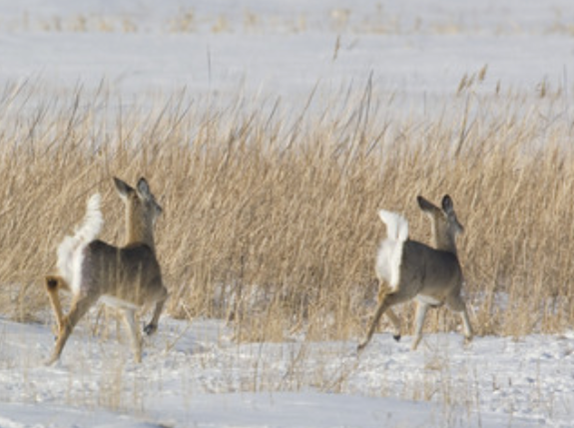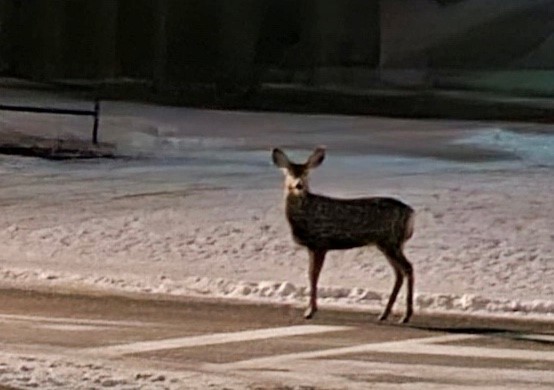Deer Neighbours
by Mirai Hanson
All over North America, deer populations have faced increasing challenges due to human encroachment. Despite these pressures, they are incredibly adaptable and able to survive. Urban areas have enough habitat to provide them with cover for safety, and trees and shrubs to browse for food. In cities, many have learned to look both ways for cars before crossing the street, and the “deer in the headlights” saying does not apply to them. It seems we are seeing more deer in areas of Calgary that are close to the river valleys and edges of the City when traffic quiets down.
An encounter with a deer has historically held significance in many native North American cultures, where it has been seen to forecast change, new opportunities, peace, fertility, and abundance. Some have seen a deer encounter as reason to take a more positive, graceful, balanced, grounded, and compassionate approach to life.
When you encounter a deer, give it plenty of space. Don’t allow your dog to harass or chase it.
In Calgary, we have both Mule and White-Tailed deer.
Mule deer have larger ears.
White Tailed deer have white on the front of the neck and tails with pure white on the underside – no black tip. Their tails flag from side to side as they run.
Both species of deer have coats that change to a darker colour in winter.
Their hair is hollow, providing better insulation. Their long narrow legs help their blood stay warm by the blood vessels touching each other. Their eyes and ears move independently to better pinpoint danger.
They have strong teeth for chewing hard grass stems and young pinecones, which have fewer calories than summer food. In the wild, all deer lose weight in winter but about 60% of fawns will survive.
Like all animals, deer must constantly balance the cost-benefit ratio of expending energy. They must use energy to stay warm and to feed. When it gets cold and snow accumulates, it takes more energy to move to find food. At some point, the energy cost exceeds the benefit. By finding shelter and moving less, when it is really cold, deer conserve energy and burn less of what remains of their stored fat.
While there have been times when deer or elk seemed to take over spaces and become territorial in Banff or Okotoks, we have not really seen that in Calgary.
When they leave the parks to seek shelter and a snack (and perhaps escape hunters or predators) in our neighbourhoods, be sure to give them some space and just enjoy their visit.


Click here to the Bayview Community News home page for the latest Bayview community updates.
Click here to the Palliser Community News home page for the latest Palliser community updates.
Click here to the Pumphill Community News home page for the latest Pumphill community updates.











